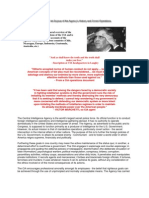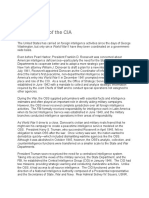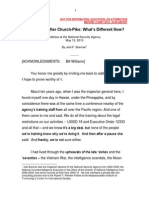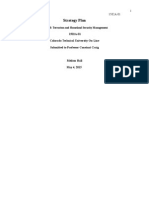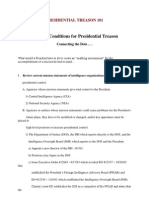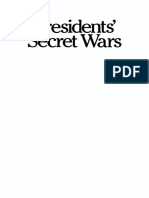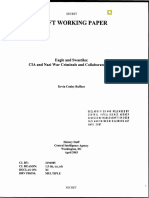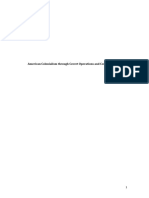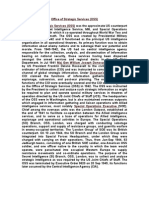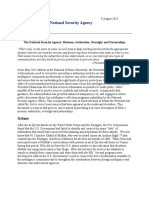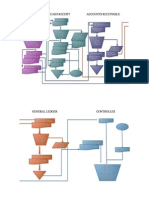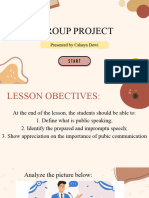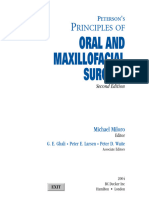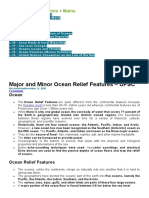0% found this document useful (0 votes)
33 views9 pagesProgress Assignment #1
Operation CHAOS was a CIA-led covert operation aimed at monitoring domestic anti-war and civil rights groups in the U.S., initiated under Presidents Johnson and Nixon, raising significant ethical concerns regarding Fourth Amendment violations and the agency's charter limitations. Despite its intended purpose of gathering intelligence on foreign influence in domestic dissent, the operation faced backlash due to a lack of evidence supporting its justification and its infringement on citizens' rights. The operation ultimately ceased in 1974, leading to increased scrutiny and reforms within the intelligence community to prevent similar ethical breaches in the future.
Uploaded by
gionferrellCopyright
© © All Rights Reserved
We take content rights seriously. If you suspect this is your content, claim it here.
Available Formats
Download as PDF, TXT or read online on Scribd
0% found this document useful (0 votes)
33 views9 pagesProgress Assignment #1
Operation CHAOS was a CIA-led covert operation aimed at monitoring domestic anti-war and civil rights groups in the U.S., initiated under Presidents Johnson and Nixon, raising significant ethical concerns regarding Fourth Amendment violations and the agency's charter limitations. Despite its intended purpose of gathering intelligence on foreign influence in domestic dissent, the operation faced backlash due to a lack of evidence supporting its justification and its infringement on citizens' rights. The operation ultimately ceased in 1974, leading to increased scrutiny and reforms within the intelligence community to prevent similar ethical breaches in the future.
Uploaded by
gionferrellCopyright
© © All Rights Reserved
We take content rights seriously. If you suspect this is your content, claim it here.
Available Formats
Download as PDF, TXT or read online on Scribd
/ 9


